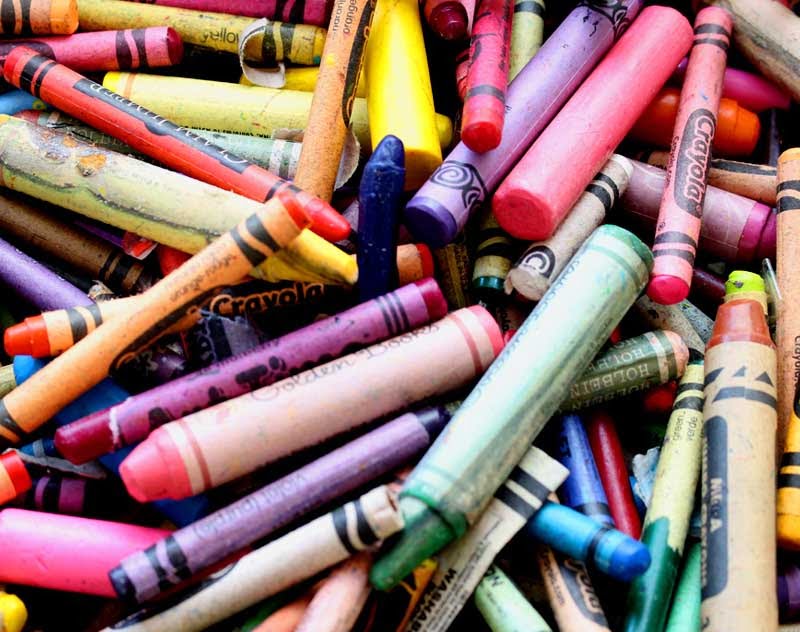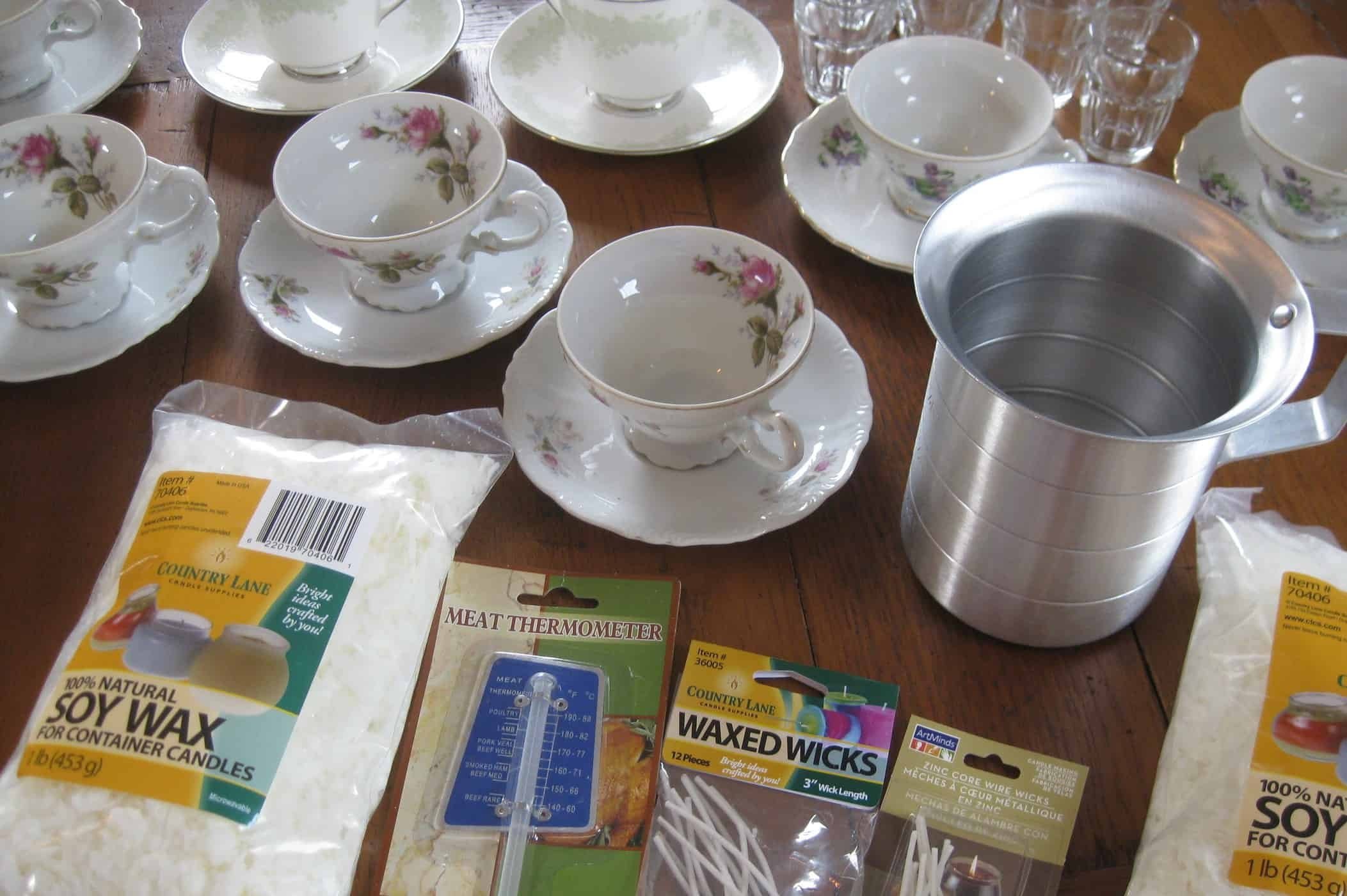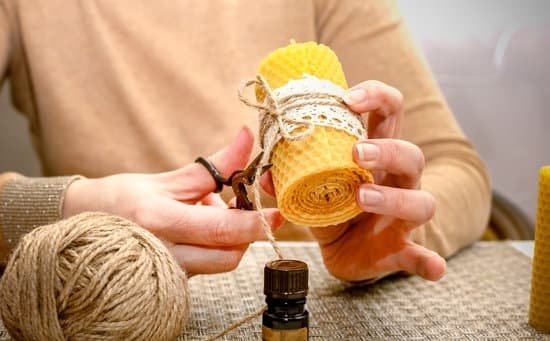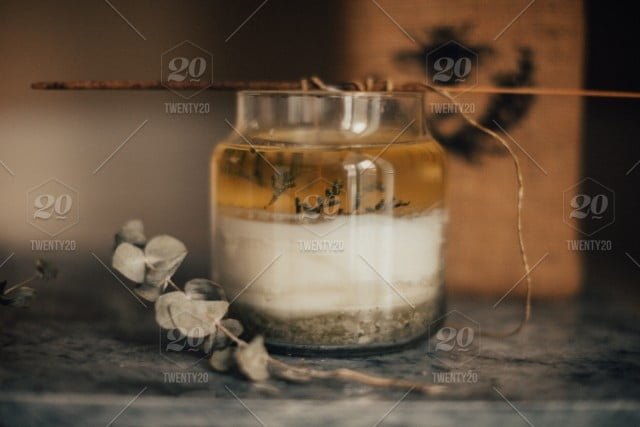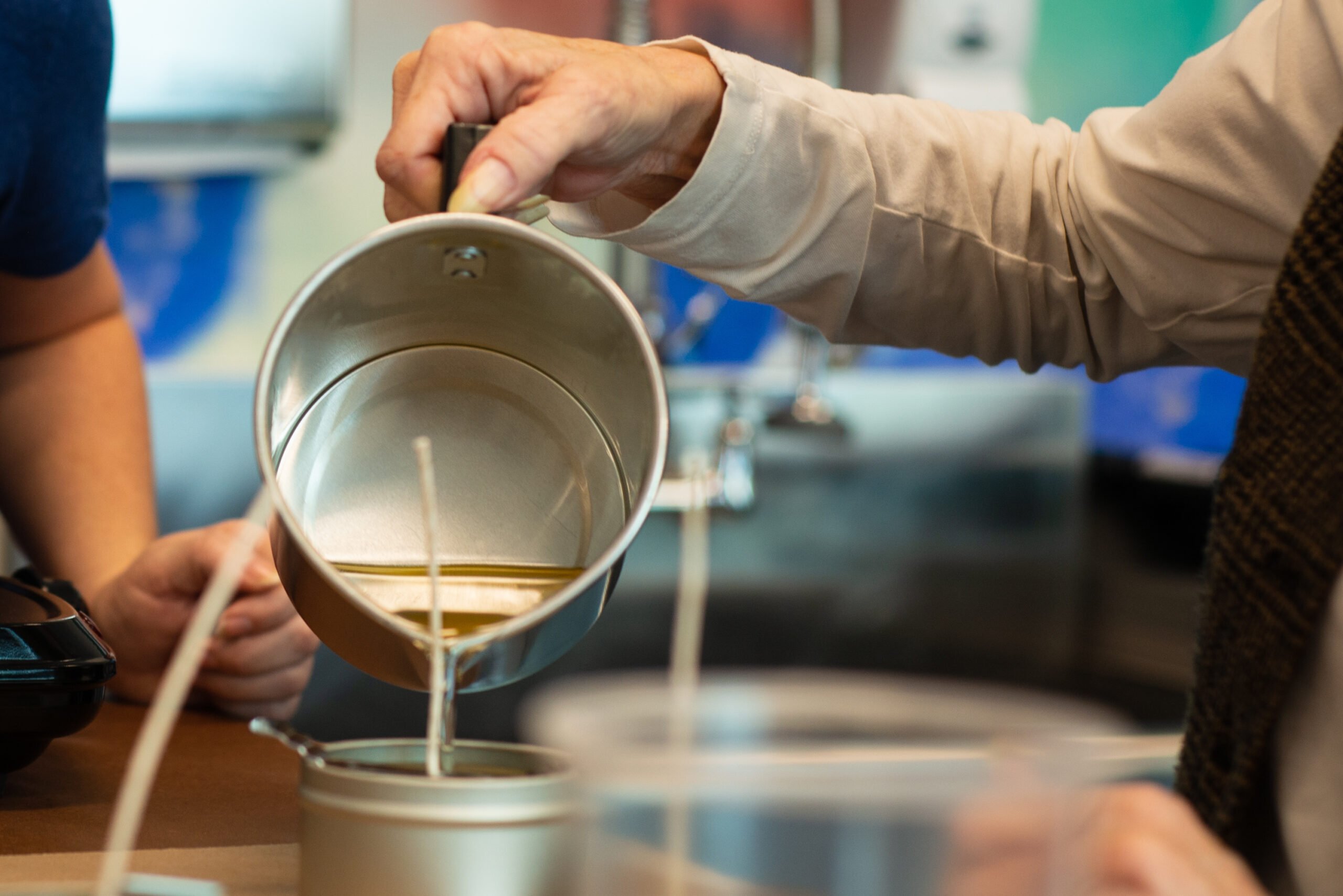Can you use food coloring for candle making? When it comes to crafting homemade candles, using food coloring as a way to add vibrant hues is a common practice. Some might wonder if this is a suitable option or if traditional candle dyes are the better choice. In this article, we will delve into the concept of candle making and the purpose of using food coloring in the process.
Candle making is an art form that allows for creativity and personalization. Whether you are making candles as a hobby or for commercial purposes, adding color to your creations can elevate their aesthetic appeal. Food coloring is one option available for achieving colorful results when making candles. However, it’s essential to understand the differences between using food coloring and traditional candle dyes to determine which best suits your needs.
In this article, we will explore the various aspects of using food coloring in candle making, including its advantages and disadvantages, how to incorporate it into the process, and safety precautions to consider. Additionally, we will discuss alternative options for coloring candles and provide tips for achieving the desired color when using food coloring. Whether you’re a beginner or experienced candle maker, understanding the role of food coloring in candle making can help you create beautiful and unique creations.
The Difference Between Food Coloring and Candle Dyes
When it comes to coloring options for candle making, there are various choices available, including food coloring and candle dyes. While both can add vibrant hues to your candles, they have distinct differences that can impact the overall quality of the finished product.
Types of Coloring Options
Candle dyes are specifically formulated for use in candle making and come in a variety of forms, including liquid, dye flakes, and dye chips. These dyes are designed to disperse evenly throughout the wax, ensuring consistent color distribution. On the other hand, food coloring is primarily intended for culinary use and is available in liquid, gel, and powder forms. While it can be used to color candles, its composition differs from that of candle dyes.
Differences in Composition
The composition of candle dyes is specifically tailored to ensure compatibility with the wax used in candle making. They are typically non-polar or oil-based, allowing them to mix seamlessly with wax without affecting its consistency or burn properties. In contrast, food coloring contains water-based components that may not blend well into wax and could potentially impact the quality of the candle.
Effects on Candle Quality
Using food coloring for candle making
Overall, while it is possible to use food coloring as a budget-friendly option for coloring candles at home, it is important to consider its potential impact on the quality and performance of the finished product when compared to purpose-made candle dyes.
Pros and Cons of Using Food Coloring for Candle Making
Food coloring is a popular choice for adding color to candles, as it is readily available and comes in a wide range of hues. However, there are both advantages and disadvantages to using food coloring in candle making. One advantage of using food coloring for candle making is the variety of colors that can be achieved.
Food coloring typically comes in a spectrum of vibrant shades, allowing for endless possibilities when customizing the appearance of your candles. Additionally, because food coloring is water-based, it can easily blend with the wax, resulting in consistent and even coloring throughout the candle.
On the other hand, one potential disadvantage of using food coloring in candle making is its impact on the burn time and scent throw of the candle. Since most food colorings are made from water and may contain additional ingredients that are not compatible with wax, they can affect the overall performance of the candle.
Water-based colorants may alter the burning characteristics of the wax, potentially leading to uneven burns or reduced scent throw. It’s important to consider these potential issues when deciding whether to use food coloring in your candles.
How to Use Food Coloring in Candle Making
When it comes to adding a pop of color to your homemade candles, food coloring can be a convenient and accessible option. Here’s a step-by-step guide on how to incorporate food coloring into your candle making process, along with the recommended amount to use for different size candles:
1. Choose the Right Type of Food Coloring: When selecting food coloring for your candles, opt for liquid or gel-based dyes rather than powdered options. Liquid and gel food coloring blends more easily into the melted wax and produces more vibrant colors.
2. Prepare Your Workstation: Before you start adding color to your candles, make sure that you have all your supplies ready. This includes your preferred type of wax, fragrance oils (if desired), wicks, a double boiler or microwave-safe container for melting wax, and of course, the food coloring.
3. Determining the Amount of Food Coloring: The amount of food coloring you should use depends on the volume of wax you’re working with. As a general rule of thumb, add approximately 1-2 drops of liquid or gel food coloring per pound of wax. Keep in mind that it’s easier to adjust the shade by adding more color later on than trying to lighten an overly saturated hue.
4. Adding Color to Your Candles: Once your wax is fully melted and removed from the heat source, it’s time to add the food coloring. Stir gently until the color is evenly distributed throughout the wax before pouring it into your containers or molds.
5. Mixing Custom Colors: If you want to create custom shades for your candles, experiment with mixing different colors together before adding them to the melted wax. This way, you can achieve unique and personalized hues that suit your preferences.
By following these simple steps and keeping track of the amount of food coloring used in each batch, you can effectively use this readily available ingredient to infuse vibrant colors into your homemade candles without compromising their quality or burn time.
Types of Candles That Can Be Made Using Food Coloring
When it comes to candle making, the options are endless, and the use of food coloring opens up even more possibilities for creating unique and visually striking candles. By incorporating food coloring into the candle making process, crafters can experiment with various techniques to achieve different types of candles, such as layered, marbled, and ombre candles.
Layered Candles
One popular type of candle that can be made using food coloring is the layered candle. This technique involves pouring layers of differently colored wax to create a multi-colored effect within the candle. By using food coloring, crafters can easily achieve vibrant and eye-catching layers that add a pop of color to their candles.
Marbled Candles
Marbled candles are another type of candle that can be created using food coloring. This technique involves swirling different colors of wax together to create a marbled or swirled effect throughout the candle. With the use of food coloring, crafters have more flexibility in choosing custom color combinations for their marbled candles, resulting in truly unique and one-of-a-kind creations.
Ombre Candles
Ombre candles are yet another option for utilizing food coloring in candle making. This technique involves blending different shades of the same color to create a gradient effect within the candle. By carefully mixing varying concentrations of food coloring into the wax, crafters can achieve stunning ombre candles that transition seamlessly from light to dark tones.
Overall, by using food coloring in candle making, crafters have the freedom to explore an array of creative possibilities when it comes to designing and crafting unique types of candles that stand out visually and make a statement when lit. Whether it’s layered candles with vibrant colors, marbled candles with swirling patterns, or ombre candles with gradient tones, there’s no limit to the creativity that can be expressed through this versatile medium.
Tips for Achieving the Desired Color
When using food coloring for candle making, it’s essential to know how to achieve the desired color effectively. Here are some valuable tips and tricks to help you create custom shades and ensure that your candles turn out exactly as you envision.
Tips for Achieving the Desired Color
- Start with a small amount: When working with food coloring, it’s best to start with a small amount and gradually add more until you reach the desired hue. This approach allows you to control the intensity of the color and avoid making the shade too dark.
- Mix primary colors: If you want to create unique colors for your candles, consider mixing primary colors such as red, blue, and yellow. By experimenting with different combinations, you can achieve a wide range of custom shades that can make your candles stand out.
- Use white wax: If you’re looking to achieve pastel or light-colored candles, using white wax as a base can help enhance the vibrancy of the food coloring. White wax allows the colors to show through more clearly, resulting in beautifully tinted candles.
In addition to these tips, it’s important to keep in mind that not all types of food coloring may yield the same results when used in candle making. Liquid food coloring can sometimes alter the texture or consistency of the wax if not used properly.
Therefore, it’s crucial to follow specific guidelines for incorporating food coloring into your candle-making process. By following these tips and being mindful of how much food coloring is being added, you can effectively achieve the desired color for your homemade candles and create unique and eye-catching designs.
To ensure safety when using food coloring in candle making, always choose high-quality products that are specifically designed for crafting candles. Remember that excessive use of food coloring might impact burn time or scent throw in your finished product. However, by employing these tips and carefully monitoring how much food coloring is used during the process, crafters can still benefit from its versatility for creating beautiful colored candles.
Safety Precautions When Using Food Coloring in Candle Making
Food coloring is a popular choice for those who want to add vibrant colors to their homemade candles. However, it’s important to be aware of the potential hazards associated with using food coloring in candle making. One of the main concerns is that some food colorings can produce toxic fumes when burned. This can pose health risks, especially when candles are burned in enclosed spaces.
To ensure safe handling and usage of food coloring in candle making, it’s important to carefully read the labels on the food coloring products. Some food colorings contain chemicals that are not safe for use in candles, while others may be labeled as candle-safe. Always opt for products specifically designed for use in candles when adding colorants to your creations.
Another safety precaution to observe when using food coloring in candle making is to wear appropriate protective gear, such as gloves and goggles, when handling concentrated dye or dye flakes. These can cause irritation if they come into contact with the skin or eyes. Additionally, ensure you are working in a well-ventilated area to minimize exposure to any potentially harmful fumes from the dyes.
When burning colored candles made with food coloring, always do so in a well-ventilated space and avoid inhaling any fumes that may be emitted during burning. By taking these safety measures, you can create beautiful colored candles while minimizing potential health risks associated with using food coloring.
| Hazards | Safety Measures |
|---|---|
| Toxic fumes from burning | Burn candles in well-ventilated spaces |
| Irritation from contact | Wear gloves and goggles when handling concentrated dye |
Alternatives to Food Coloring for Candle Making
When it comes to coloring candles, there are various options available aside from food coloring. While food coloring can be a convenient choice due to its accessibility and wide range of colors, it may not always produce the best results in candle making. Other alternatives such as candle dyes, natural colorants, and mica powders offer different benefits and effects that can enhance the overall quality of the candles.
Candle dyes are specifically formulated for use in candle making, making them an effective alternative to food coloring. They come in liquid or dye block forms and are designed to disperse evenly throughout the wax, resulting in vibrant and consistent coloration. Additionally, candle dyes do not affect the burn time or scent throw of the candles, making them a popular choice among experienced candle makers.
Natural colorants, derived from plant-based sources such as herbs, flowers, and roots, can also be used to color candles. This option appeals to those who prefer using organic and eco-friendly ingredients in their candle making process. While natural colorants may require more effort to extract and use compared to store-bought dyes, they offer a unique way to add color to candles without relying on synthetic additives.
Mica powders are finely ground minerals that provide a shimmery or metallic finish when used in candle making. They come in a wide range of colors and can be combined to create custom shades for candles. Mica powders are known for their ability to add a touch of sparkle or luster to the surface of the candles, adding visual interest and enhancing their aesthetic appeal.
It is important for candle makers to consider these alternatives when choosing how to color their candles based on their desired outcomes and preferences. Each option offers different advantages that can significantly impact the final look and quality of the finished product.
| Coloring Alternative | Advantages |
|---|---|
| Candle Dyes | Specifically formulated for even dispersion; does not affect burn time or scent throw. |
| Natural Colorants | Eco-friendly; offers unique colors from plant-based sources. |
| Mica Powders | Provides shimmer or metallic finish; adds visual interest to candles. |
Conclusion
In conclusion, the use of food coloring in candle making is a topic that has been widely debated. While it is possible to use food coloring to add color to your candles, there are several factors to consider.
As discussed in this article, food coloring can alter the burn time and scent throw of your candles, which may not be desirable for some candle makers. Additionally, the limited color options and potential safety hazards associated with using food coloring may also deter individuals from incorporating it into their candle making process.
However, despite these drawbacks, some candle makers still choose to use food coloring due to its accessibility and affordability. If you decide to use food coloring in your candle making endeavors, it is important to follow the recommended guidelines for usage and take necessary precautions to ensure a safe and effective outcome.
Ultimately, whether or not you choose to use food coloring for candle making depends on your personal preferences and priorities as a candle maker. With the availability of alternative options such as candle dyes, natural colorants, and mica powders, it may be worth exploring these alternatives to determine what best suits your needs and goals for creating beautifully colored candles.
Frequently Asked Questions
What Coloring Is Safe for Candles?
When choosing colors for candles, it’s important to use dyes or colorants specifically designed for candle making. These dyes are safe to use and won’t interfere with the burning of the candle. It’s best to avoid using traditional food coloring or other non-candle-specific dyes as they may not be safe when the candle is burned.
What Is a Good Substitute for Candle Dye?
A good substitute for candle dye can be natural ingredients such as spices, herbs, or even crayons. Spices like turmeric or paprika can be used to add color to your candles without affecting their quality. Another option is using natural beeswax that already has a yellowish hue, which eliminates the need for additional coloring.
How Do You Color Candles Naturally?
Coloring candles naturally can be achieved by incorporating various natural ingredients into the wax, such as dried flowers, herbs, or spices. For example, adding dried lavender buds to the wax can give the candle a subtle purple hue, while using ground cinnamon can produce a warm brown color.
Beeswax itself can also lend a natural golden color to candles without the need for additional coloring agents.

Welcome to my candle making blog! In this blog, I will be sharing my tips and tricks for making candles. I will also be sharing some of my favorite recipes.

